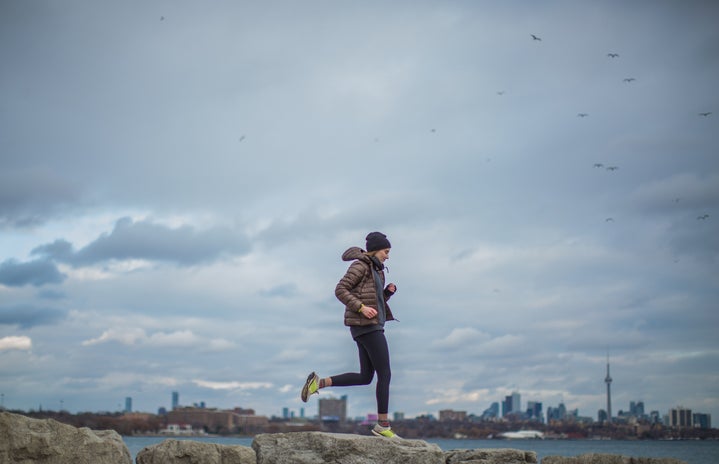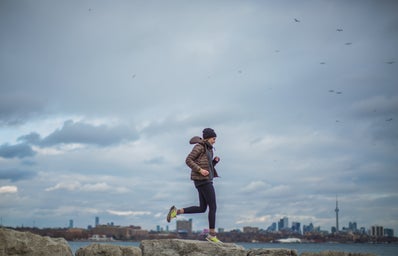It can sometimes seem daunting to try a new hobby, especially one that involves bending over backward and standing on your head. Yes, I’m talking about yoga. Though it has been practiced in India for millennia, yoga has become increasingly more widespread in recent years, with studios cropping up all over the globe. Part of this exercise craze’s appeal is the fact that just about anyone can do it. I never considered myself flexible, but after a few weeks of doing yoga, I managed to transition from pose to pose with ease.
“Having a flexible body isn’t necessary for yoga,” yoga instructor Liz Owen affirms. “Flexibility is one of the benefits of yoga, not a prerequisite for it.” Even if you have the tightest hamstrings imaginable, it may only take about a month of practice for you to loosen up. Increased flexibility is just one of the many benefits of incorporating yoga into your daily routine. According to yogaalliance.org, yoga’s emphasis on breathing and relaxation can lower levels of the stress hormone cortisol, which can help you reduce stress, lower your blood pressure and anxiety levels, and even boost your immune system. Yoga poses incorporate every muscle of the body, allowing you to “increase strength…from head to toe…and relieve muscle tension,” the website reports. And even if you opt for a slow-paced style of yoga, you can still burn calories and learn to feel better about your body. Other benefits of yoga include improved circulation, increased endurance, and better coordination. In other words, there’s no reason not to give it a try.
Gearing Up
Once you’ve decided to start practicing yoga, your next step is to stock up on the proper gear. The yoga dress code is fairly straightforward: Owen suggests “any comfortable clothing that doesn’t get in the way of moving easily.” You can choose a loose-fitting T-shirt and sweatpants or a more form-fitting tank and leggings – whatever makes you feel most comfortable. Leave your shoes at the door as you enter the studio, and remove your socks as you start to warm up. Socks provide poor traction on a yoga mat and impede balance, so bare feet are ideal. In terms of props, your mat will be your best friend. “[A mat] helps your…feet, hands, arms, or legs to get grounded so you don’t slip,” Owen says. Most yoga studios will rent out mats for a small fee, but if you’d like to practice yoga at home, it’s best to buy your own. Mats generally cost around $20 – I bought mine at my local Whole Foods Market, but if shopping at home is more your speed, Nike.com offers a comparable mat at a similar price. You might also consider investing in blocks, which can provide additional support for the hands in a standing pose or a backbend. And if you’re practicing a fast-paced, sweat-inducing style of yoga, be sure to bring a bottle of water and a towel to class.
A Variety of Styles
Not all yoga classes are taught in the same style, and sometimes all those crazy names on your gym’s class schedule can seem a little daunting. Here are a few types of yoga that you can explore, translated:
- Iyengar Yoga focuses on aligning the body and building strength and flexibility. In class, you’ll learn to connect your breaths to the movement of your body.
- Ashtanga or Flow Yoga also emphasizes the coordination of movement and breath but is less concerned with alignment and form. As the name of this variety of yoga suggests, you’ll flow fluidly from one pose to another.
- Kripalu Yoga is a gentle practice that concentrates on the flow of breath.
- Power Yoga is rigorous and more similar to the kinds of aerobic workouts that have become a staple in the Western world. This type of yoga is performed in a heated room, and poses get progressively more challenging as the class goes on.
- Bikram Yoga incorporates a routine of 26 poses, each of which is performed twice during a session. Though it is performed in a heated room, the poses aren’t as challenging as those in Power Yoga.
Deciding which kind of yoga is right for you is a choice you can only make for yourself. I recently became intrigued by Power Yoga, which Owen says is intended to warm up the body to increase flexibility and remove bodily toxins through sweat. This may sound like a good idea, but Owen warns that stretching your body “beyond its realistic capacity” could make you more susceptible to injuries, so proceed with caution.
Five Important Poses
However you choose to practice yoga, Owen recommends these five poses that any beginner (like you!) can learn.
Mountain Pose (Tadasana) Practicing this pose is an easy way for beginners to learn balance and calmness, since both your feet are firmly planted on the ground. Stand with your big toes touching, your other toes and heels spread slightly apart, and your weight balanced evenly between your two feet. Let your arms hang on either side of your body. Focus on forming a straight line from your head to your feet, and take long, deep breaths. For an added challenge, close your eyes while in this pose.
Warrior Poses (Virabhadrasana) “Warrior poses help you express your power and fierceness and increase self-assurance,” says Owen. You can transition easily from Mountain Pose to Warrior I by stepping back with one foot and bending the opposite knee. Turn your back foot out on an angle and make sure your back leg is rooted to the ground. Reach your arms up to the ceiling, parallel to one another, with your pelvis in a neutral position and your hips rotated forward. To transition to Warrior II, open your body out to the side opposite your front foot and extend your arms out in front and behind you.
Backbends Backbends of all kinds help to open the chest and strengthen the back muscles. Some simple backbends for beginners include Cow Pose (Bitilasana), Cobra Pose (Bhujangasana), and Sphinx Pose.
Forward Bends “Forward bends quiet the mind and help you let go of mental and emotional tension,” Owen reports. Two of the most common forward bends you’ll see in a yoga class are Downward-Facing Dog (Adho Mukha Svanasana) and the relaxing Child’s Pose (Balasana). Standing Forward Bend (Uttanasana) involves standing and folding your upper body over straight legs until you can touch the floor. According to yogajournal.com, this pose strengthens your knees and thighs, reduces anxiety, and can even relieve headaches.
Deep Relaxation Relaxation involves “taking time to let our bodies and minds completely let go into and support the earth,” according to Owen. “It brings us to the core of our being, like coming home to ourselves.” At the end of each class, Owen brings her students into Corpse Pose (Savasana) for five minutes, where they lie supine with their legs straight out and arms resting at their sides. This pose will allow you to focus on your breathing and bring your practice to a calm, satisfying end. If you don’t have time to go to the gym, you can easily practice these and other poses in your dorm room on your own mat. (I have!) “Any practice time is good, even if it is only twice a week to begin with,” Owen advises. “Even five minutes a day can be very helpful. Pretty soon…all you’ll want to do is yoga!”
Sources:
Liz Owen, Certified Iyengar Yoga Instructor and E-RYT500 “Top Ten Reasons to do Yoga” from Yoga Alliance “Yoga Poses” from Yoga Journal

